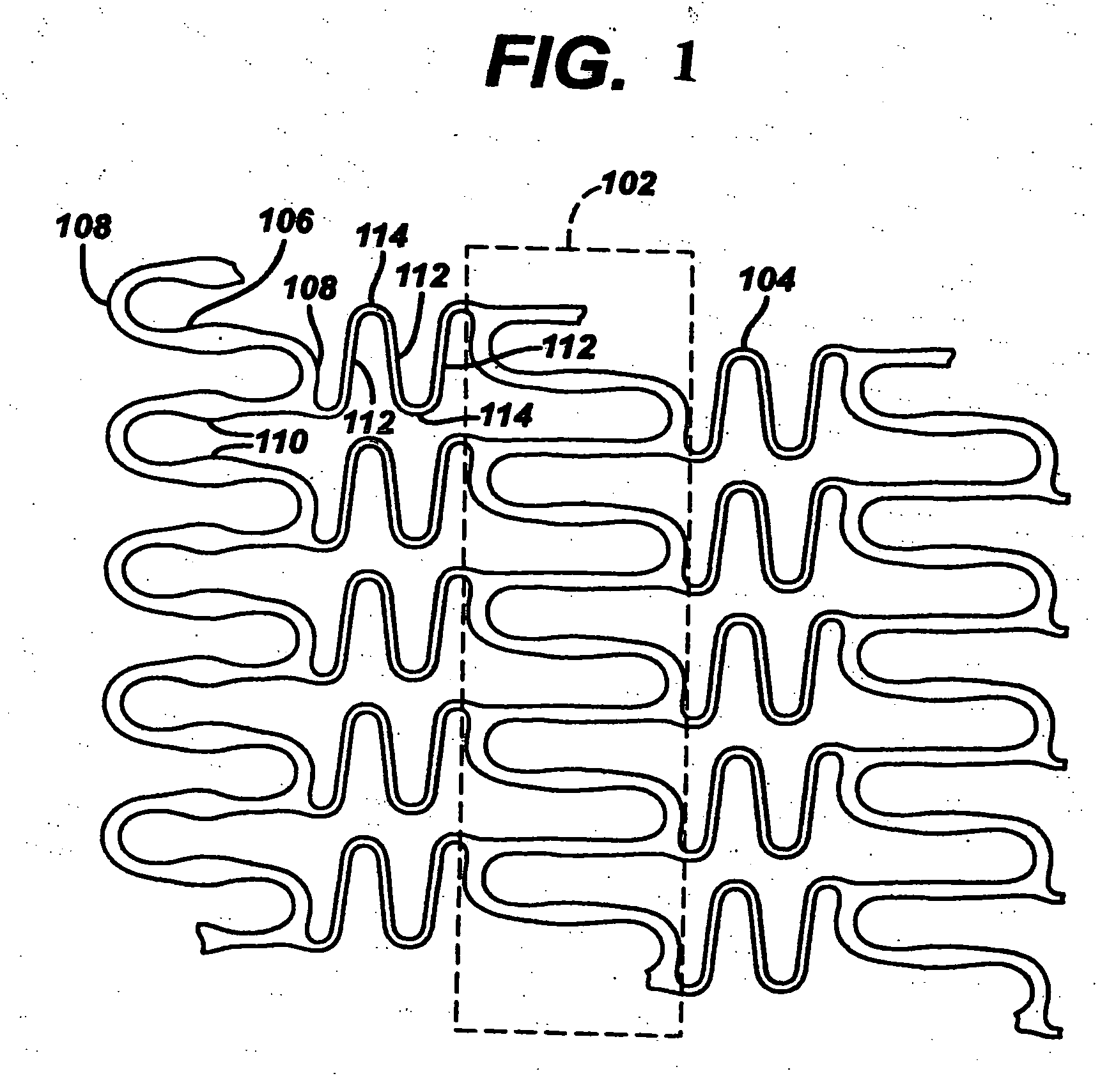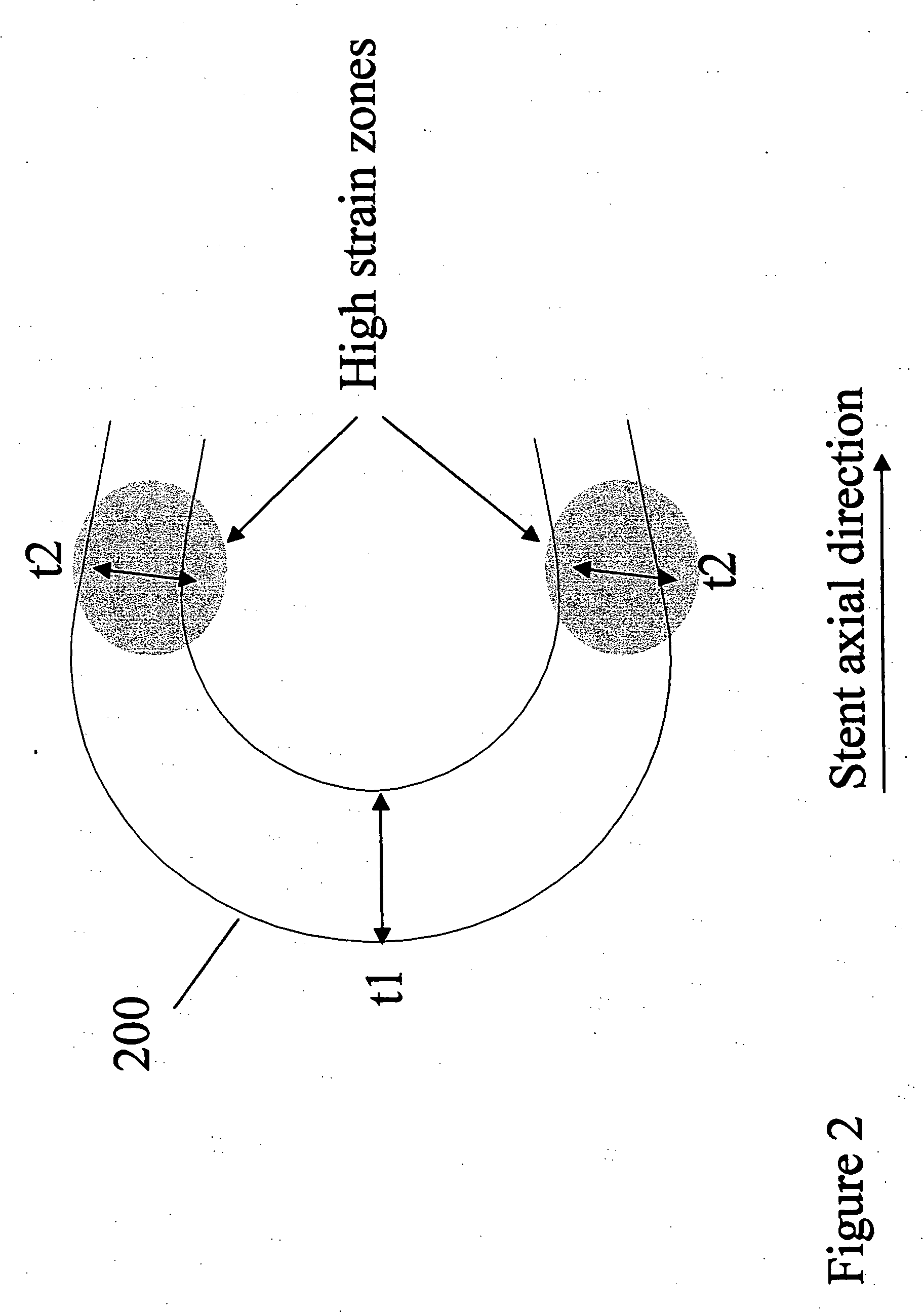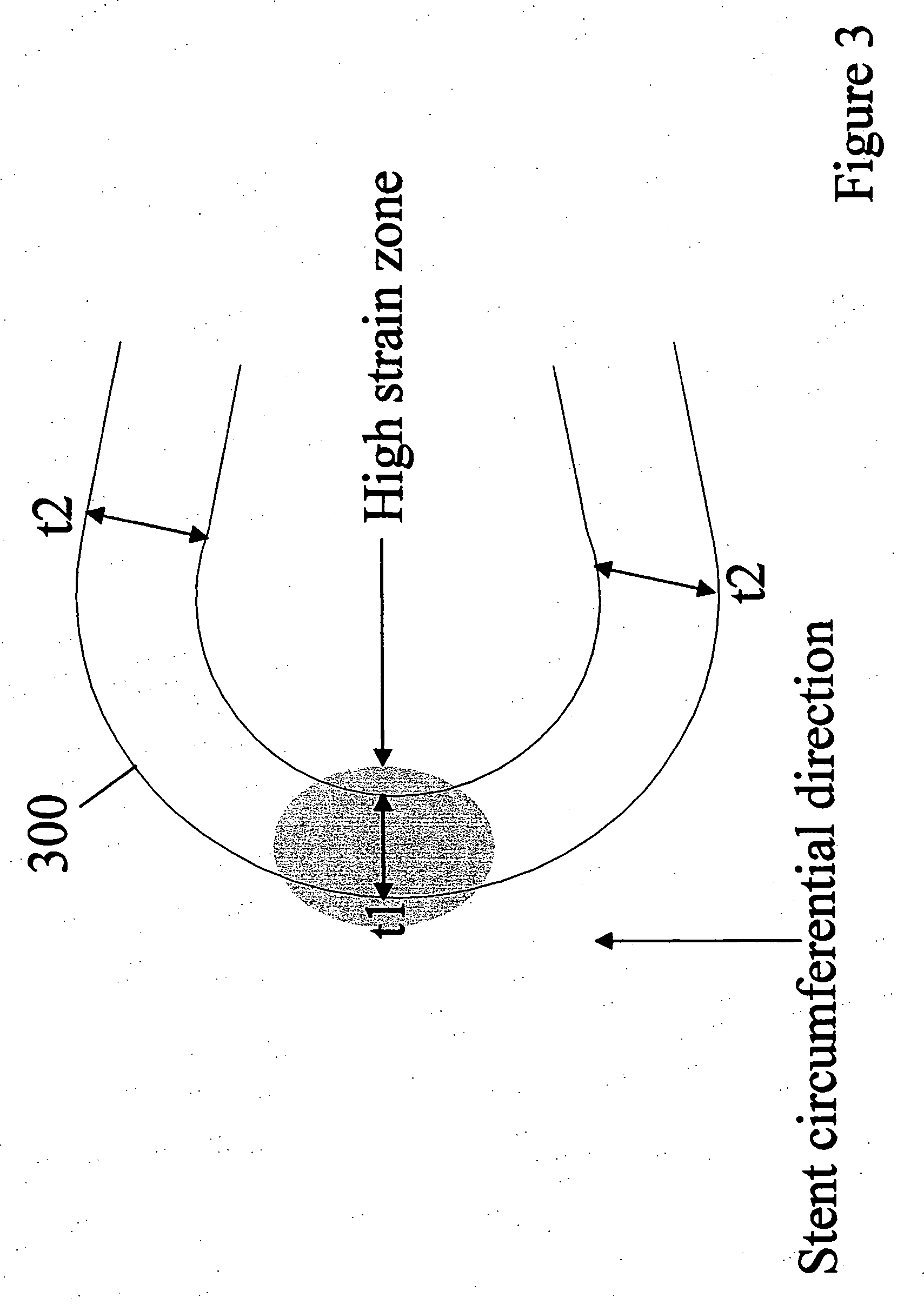Polymeric stent having modified molecular structures
a polymer stent and molecular structure technology, applied in the field of intraluminal polymeric stents, can solve the problems of inadequate tailoring of intraluminal stents, and achieve the effect of enhancing the physical and/or mechanical properties of one or more components and facilitating the design of stents
- Summary
- Abstract
- Description
- Claims
- Application Information
AI Technical Summary
Benefits of technology
Problems solved by technology
Method used
Image
Examples
Embodiment Construction
[0024] Implantable medical devices may be fabricated from any number of suitable biocompatible materials, including polymeric materials. The internal structure of these polymeric materials may be altered utilizing mechanical and / or chemical manipulation of the polymers. These internal structure modifications may be utilized to create devices having specific gross characteristics such as crystalline and amorphous morphology and orientation as is explained in detail subsequently. Although the present invention applies to any number of implantable medical devices, for ease of explanation, the following detailed description will focus on an exemplary stent.
[0025] Referring to FIG. 1, there is illustrated a partial planar view of an exemplary stent 100 in accordance with the present invention. The exemplary stent 100 comprises a plurality of hoop components 102 interconnected by a plurality of flexible connectors 104. The hoop components 102 are formed as a continuous series of substant...
PUM
 Login to View More
Login to View More Abstract
Description
Claims
Application Information
 Login to View More
Login to View More - R&D
- Intellectual Property
- Life Sciences
- Materials
- Tech Scout
- Unparalleled Data Quality
- Higher Quality Content
- 60% Fewer Hallucinations
Browse by: Latest US Patents, China's latest patents, Technical Efficacy Thesaurus, Application Domain, Technology Topic, Popular Technical Reports.
© 2025 PatSnap. All rights reserved.Legal|Privacy policy|Modern Slavery Act Transparency Statement|Sitemap|About US| Contact US: help@patsnap.com



